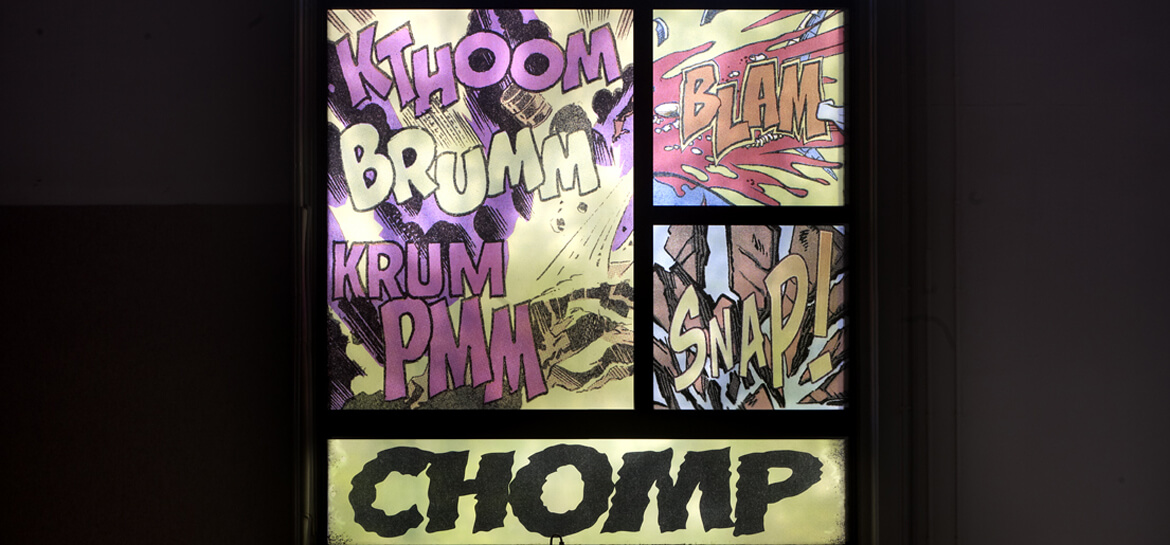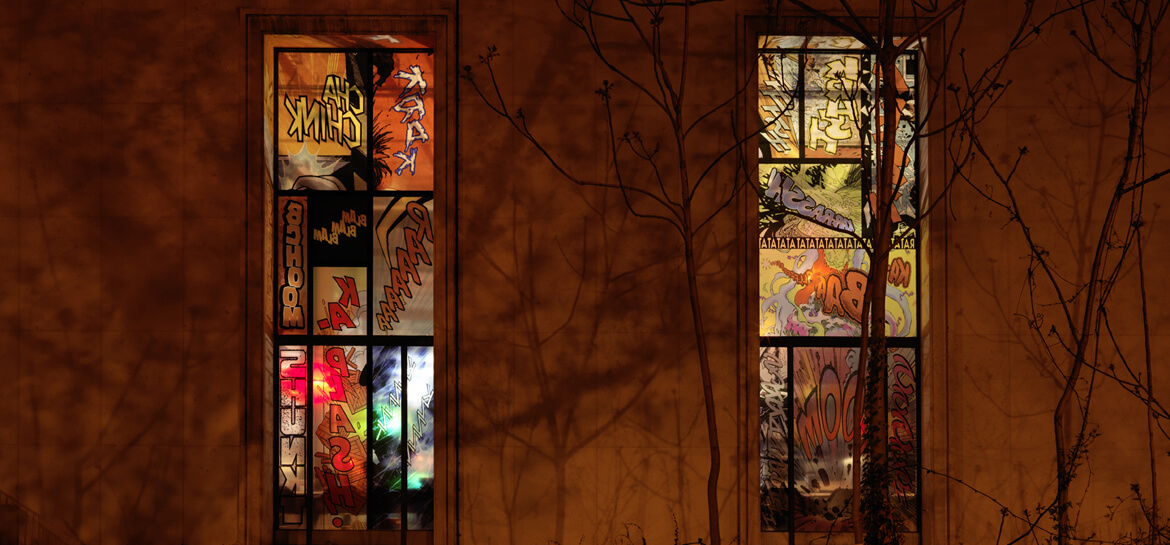SEARCH THE ENTIRE SITE

Christian Marclay
Seven WindowsChristian Marclay proposes an innovative design for the seven windows that structure the façade of the Palais de Tokyo looking on to the Avenue du Président Wilson.
Awarded the Golden Lion for the best artist at the 2011 Venice Biennale for his video work The Clock, 2011, Christian Marclay, a Swiss American artist (b. 1955, lives and works in London, United Kingdom), has been exploring the links between sound and the visual arts for the last 30 years, engaging in a number of practices such as music, performance, photography, video, and installation.
To mark the reopening of the Palais de Tokyo, Christian Marclay is proposing an innovative design for the seven windows that structure the façade of the Palais de Tokyo looking on to the Avenue du Président Wilson. For this new project, he is appropriating onomatopoeias taken from comic books, in a direct reference to the graphic expression of the world of sound. Since the late 1980s Christian Marclay has been exploring these familiar sound words through collages, photographs, and more recently musical scores. The spectacular colorful collages of found sounds composed by the artist cover the windows of the building, so endowing it with a sensitivity to music. The division of these vertical walls of glass conjures up the organization of a page of comic strip, giving rise to the sensation of a sound story that unfolds in space as the visitor moves. The onomatopoeias that inspire the composition of each window evoke a variety of times and cultures, ranging from American comic strips to Gothic stained glass windows, or Japanese hanging scrolls (kakemono). These multiple references underline the universal nature of the emotions expressed by the onomatopoeias, and this is in spite of the differences that exist between their codifications according to language and culture of origin. Finally the project is also intended as a nod to the structure of Marcel Duchamp’s Large Glass, and the noise it made when it broke during a move and was thus considered finished. It will be possible to appreciate Christian Marclay’s work twice over, at night from outside, illuminated by the lighting in the Palais de Tokyo restaurant, by day from inside, lit up by natural daylight, a special reference to cinema and the film library that was at one time housed in the building.
